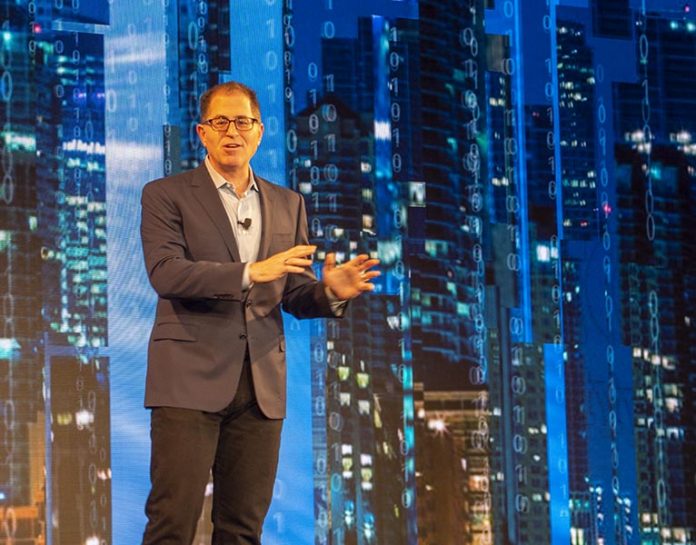Pay-as-you-go consumption models are storming back. At Dell Technology Summit 2019, the company is rolling out its pay-as-you-go consumption models, along with new automation tools to make deployments easier.
Dell Technologies On Demand
Today, Dell Technologies is announcing its consumption-based model, Dell Technologies On Demand or “DTOD.” This is a big deal and part of the company’s Vision for 2030. Dell has a seasoned financing arm and it is leveraging that resource to change how people buy IT.
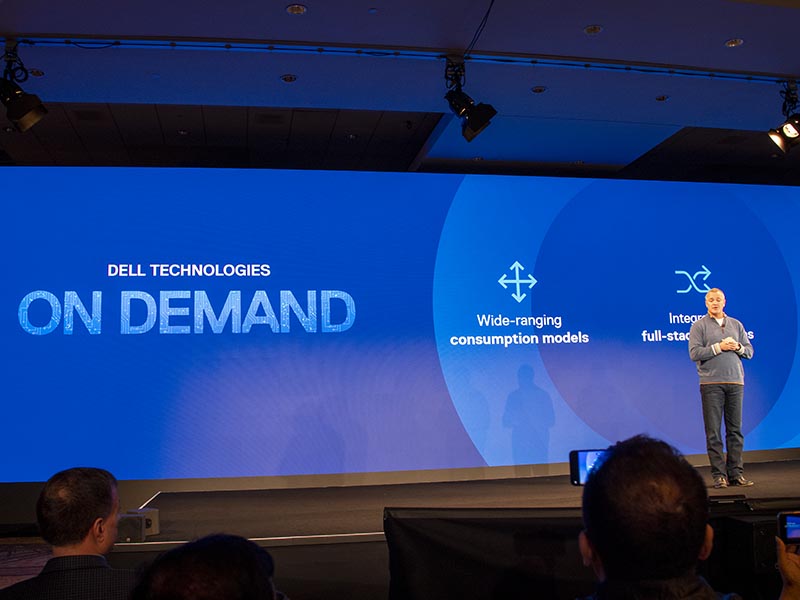
DTOD, like HPE GreenLake, and Lenovo TruScale, is a response to IT departments asking to pay for on-prem hardware (or colocated solutions) like they do with cloud providers. To meet this customer demand, Dell Technologies is using its portfolio and the tooling it has built over the years, to provide a broad portfolio of products on its consumption program.
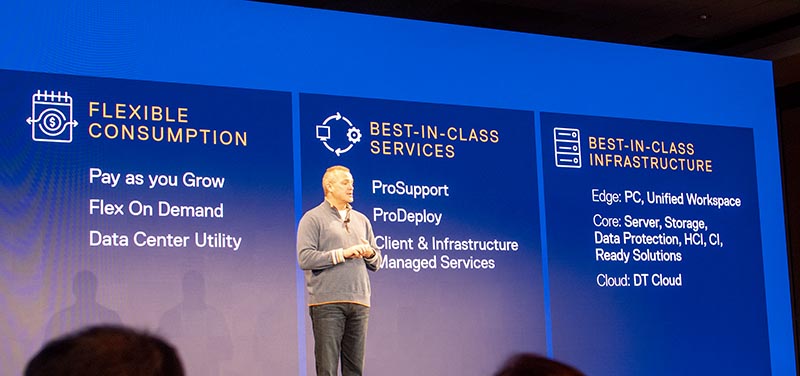
As an example, the Dell EMC PowerEdge portfolio is available with a processor-based usage measurement option. This allows for metering CPU usage for a consumption model. The company also has portfolio capabilities such as those from VMware to deliver an entire HCI stack.
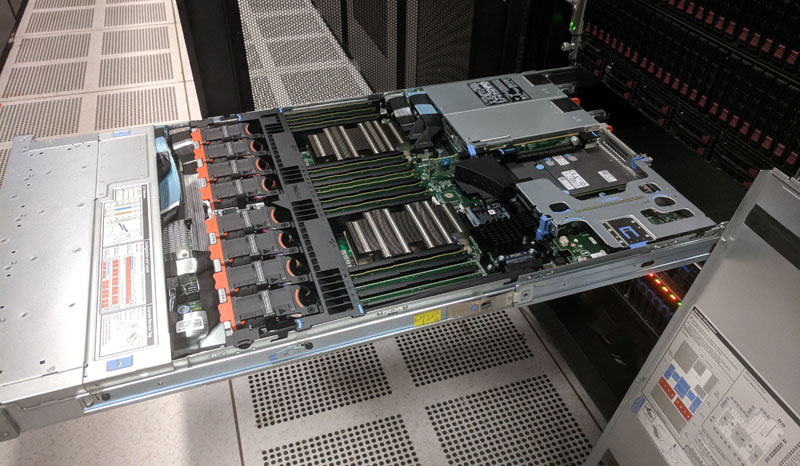
We asked Dell at the Dell Technologies Summit 2019, and the DTOD program is primarily owned by Dell Financial Services.
Dell Technologies PowerOne Autonomous Infrastructure
Dell is also pushing PowerOne which is its autonomous infrastructure initiative combined with pay-per-use. Dell Technologies PowerOne leverages Dell’s infrastructure tooling such as iDRAC and the chassis management features in the Dell EMC PowerEdge MX to automate tasks such as provisioning compute, networking, and storage. As Dell says “PowerOne integrates PowerEdge compute, PowerMax storage, PowerSwitch networking and VMware virtualization into a single system combined with a built-in intelligence engine to automate thousands of manual steps over its lifecycle.” (Source: Dell Technologies)
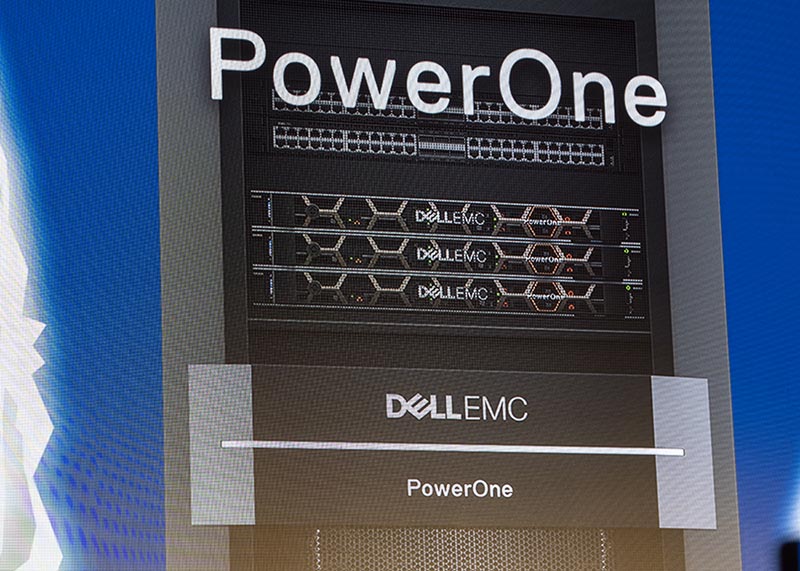
This is something that the industry has been driving towards for decades. Oracle has been pushing its Autonomous Linux and Autonomous Cloud. Starting in 2020, we expect more companies to follow Dell Technologies and offer more autonomy in their infrastructure. CIOs need to focus on decreasing costs, and delivering highly automated solutions to compete with cloud offerings is one way to do that.
Dell claims that using its PowerOne stack, 98% fewer manual intervention steps for deploying a VMware stack. The company sees this is its way to provide, manage, and provision private clouds in an automated fashion.
PC as a Service is Still Here
PC as a Service offers end-user computing devices as a service with a monthly price. This is one that we have seen before and that Dell Financial Services has been involved in for years.
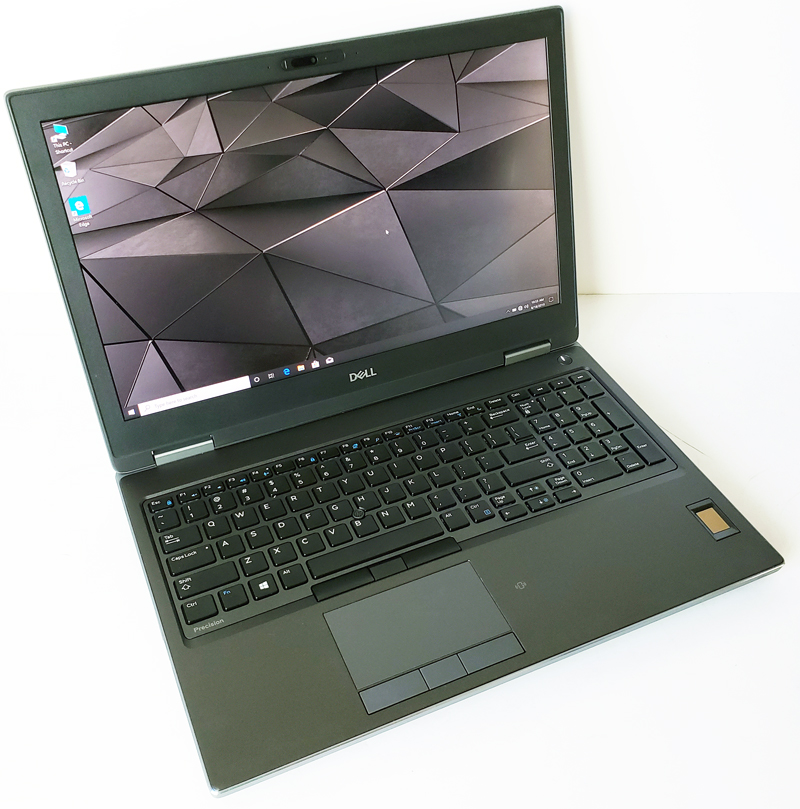
Like many of the large IT outsourcing shops, Dell is being asked to not just transform the way they deliver and bill for data center technologies. Instead, IT organizations are asking for everything as a consumption or pay-as-you-go model. With that, the company is also looking at bundling those PCs with products like Workspace One to automate endpoint IT.
Final Words
Dell Technologies has the broadest portfolio of hardware, software, services, and financing in the industry. It also has a massive installed base. The push to a consumption model and an autonomous infrastructure program happening at the same event is not a coincidence. Dell’s customers are pushing the company to deliver IT in a more cloud-like manner.
Personally, one of the more interesting aspects of this is that the industry has tried this before. Large IT outsourcing shops like EDS (owned by HP for some time then spun out) have been doing this for decades. One of the key challenges that the industry faces this time is how to deal with the competing interests of keeping costs low while still providing a benefit of new technologies. The big IT outsourcing companies are often criticized for extending hardware lifecycles to keep costs low. From a concept perspective, what Dell is doing is sound. What remains to be seen is how well it is implemented.
As a quick note: this is a live piece that is being written as the keynote is unfolding. It will see updates as more comes out.

